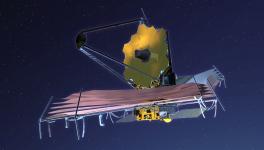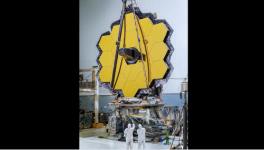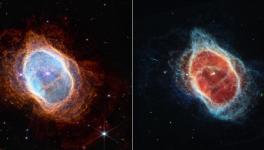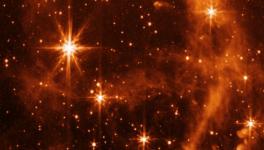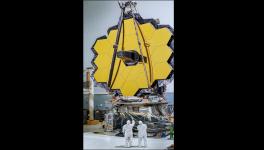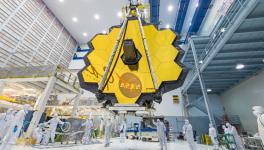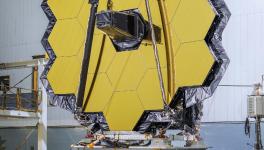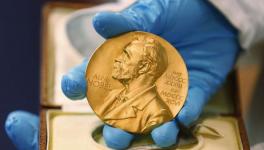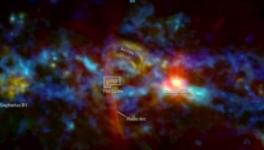Hubble Data Shows Milky Way May Accrue Resources from Other Galaxies
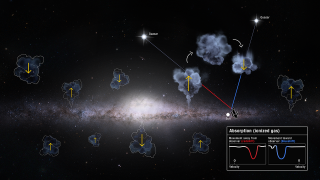
Image Courtesy: Space.com
This illustration shows gas rising and falling in and out of the Milky Way galaxy using Hubble's COS instrument. With 10 years of data from COS, astronomers have found that there is more gas coming into our galaxy than leaving it.
Astrophysics brings endless surprises. In a latest, the Hubble telescope data—collected over a decade—has revealed a surprise about the Milky Way, the galaxy that we belong to. The Hubble data reveals something which has made scientists think that the Milky Way can take away resources from the neighboring galaxies and can accumulate on its own account.
The Milky Way comes under the category of a spiral galaxy, containing a galactic disk with densely clustered stars at the helm (the bulge) and sparse halo stars. The galactic disk is composed of stars and gaseous components. The stars within the Milky Way undergo supernova blast and such events along with violent stellar winds blow gas out of the galactic disk. Eventually, the blown-out gas falls back onto the galaxy that accounts for the formation of new generations of stars. This way, our Milky Way is quite economic in balancing its income and expenses. In an ambitious effort, scientists studied the full account of this recycling process and are left surprised to have found a surplus of the incoming gas to the Milky Way.
Astronomer Andrew Fox of the Space Telescope Science Institute, Baltimore, Maryland and the lead author of the paper that reports the findings, quoted to have said to the NASA’s Hubblesite, “We expected to find the Milky Way's books balanced, with an equilibrium of gas inflow and outflow, but 10 years of Hubble ultraviolet data has shown there is more coming in than going out.” He also said that as of now, the source of the excess inflowing gas remains a mystery. The study has been scheduled to be published in The Astrophysics Journal published by Institute of Physics.
A possible explanation of the surplus incoming gas to the Milky Way could be extra gaseous materials coming from intergalactic medium. But, Fox has other proposal as well. According to him, the Milky Way is accruing the gas from small satellite galaxies taking advantage of its considerably great gravitational pull. In a way, the Milky Way is siphoning away the resources of other galaxies. Apart from this, the hotter gas could also have played a role in giving rise to this phenomenon, as this survey, a galaxy-wide one, looked only at cool gases.
The scientists accomplished this survey by collecting archival observations from Hubble’s Cosmic Origins Spectrograph (COS), which was installed on the telescope by astronauts in 2009 during its last servicing mission, reads the Hubblesite. Researchers analysed the decade-long Hubble data about 200 past ultraviolet observations of the diffuse halo that surrounds the disk of the Milky Way. The detailed ultraviolet data of the Hubble provided fascinating picture of gas flow across the galaxy allowing the first galaxy-wide inventory. The gas clouds around the halos of the galaxy are only detectable under ultra violet light, something that the Hubble is specialised in collecting.
Rongmon Bordoloi of North Carolina State University, USA, and a co-author of the study, says, “The original Hubble COS observations were taken to study the universe far beyond our galaxy, but we went back to them and analysed the Milky Way gas in the foreground. It's a credit to the Hubble archive that we can use the same observations to study both the near and the more distant universe. Hubble's resolution allows us to simultaneously study local and remote celestial objects.”
The gas clouds around the Milky Way are invisible and the researchers had to use light from background quasars for the detection of motions of the clouds. Quasars are brilliantly luminous celestial bodies that are thought to be powered by well-fed black holes. The quasars can shine across billions of light years and light from it also reaches the Milky Way passing through the invisible clouds around it. The gas in the cloud absorbs lights of certain frequencies that act like fingerprints. Fox’s team singled out the silicon fingerprint and traced the gas around the Milky Way. Outflowing and inflowing gas clouds could also be observed with the help of Doppler shift of light. The approaching clouds appear bluer while the outgoing clouds are redder.
With the help of this technique, the team could find out the surplus of incoming gas flow to the Milky Way. Planning for future, they have in their mind to study the exact source of the surplus incoming gas flow. They also plan to look at whether other big galaxies behave in a similar manner.
Get the latest reports & analysis with people's perspective on Protests, movements & deep analytical videos, discussions of the current affairs in your Telegram app. Subscribe to NewsClick's Telegram channel & get Real-Time updates on stories, as they get published on our website.









